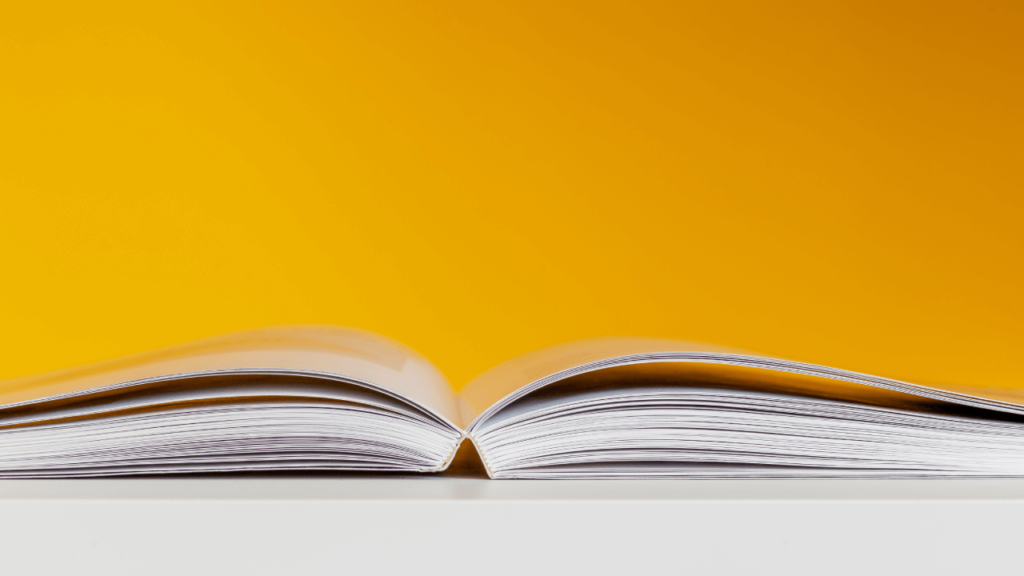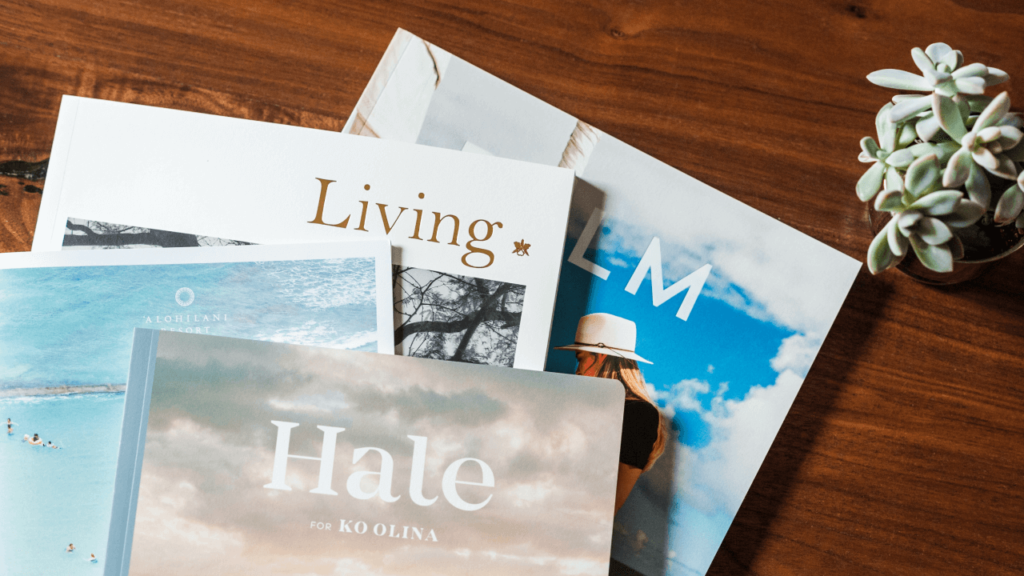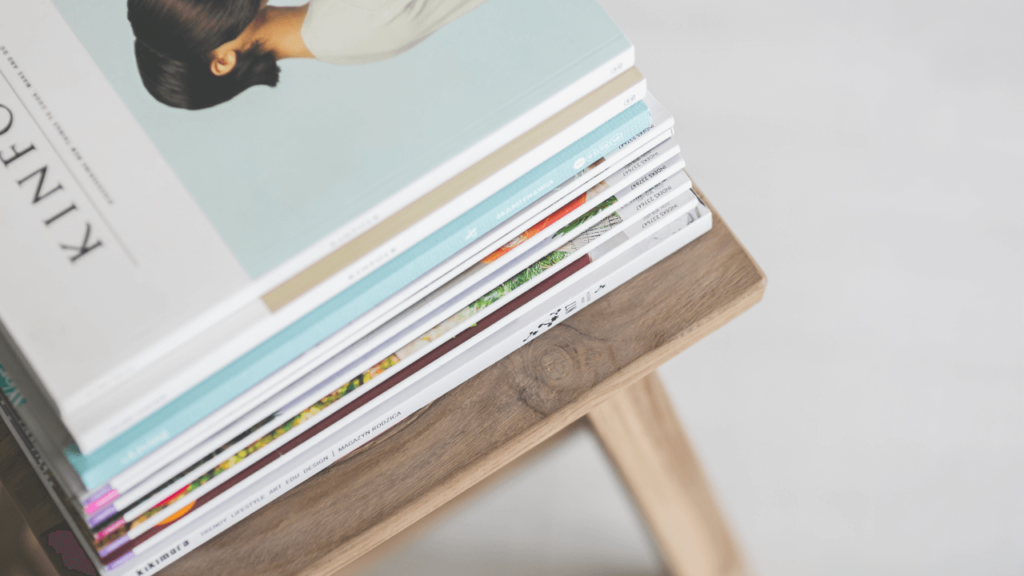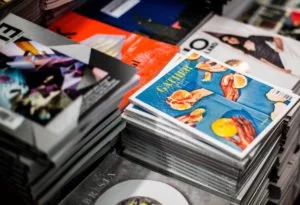Choosing the best type of paper for printing is one of the most important decision you’ll have to make for your project. Ultimately, the paper type for printing you choose has as much of an impact as your font choice and overall layout. The printing paper type and size you end up with affects how, when, and where your end product can be used. It will also have an effect on the total cost.
How To Pick The Right Kind Of Paper Stock
The paper used in digital printing is called paper stock. There are different types of paper stock you can use, each on differing in terms of thickness, finish, coating, and so on. The paper you choose serves more than just an aesthetic function. It also affects how the paper is to be used, where it is to be used, who is using it, even the mailing costs. Certain types of paper are also better at weather certain external conditions such as water, chemicals, or extreme temperatures.
Finding the Right Paper Material
These days, wood is not the only source of paper. Paper can come from all sorts of materials including cloth, synthetic fibers, and plastic. These types of paper serve special functions.
For more eco-friendly options, you can also go for recycled paper options that have a smaller carbon footprint.
Some Things to Consider
Will you need detailed die-cuts?
If you will be requiring your printer to be doing detailed die-cuts for your printing job, a thicker paper will hold up to the task better. Thinner paper stock may lose the details or will have frayed edges.
Will you be mailing it?
Post offices compute expenses based on the weight of your item, whether that’s a brochure, pamphlet, business card, magazine, etc. To keep the mailing cost at a minimum, keep the weight as low as possible. Choose a paper stock that’s lightweight without sacrificing the quality of the print.
Where will you be storing the printed pieces?
If there is any chance of exposure to extreme temperatures, rain, or moisture, it’s best to invest in paper that is resistant to these conditions.
Will you be writing on it?
Not all types of paper can be written on. In fact, some types, such as glossy paper, are virtually impossible to be written on with an ordinary ballpoint pen. If you plan on having your recipients or you write on it, such as for business card paper, we recommend opting for uncoated paper which does not have a coated, glossy, or heavily textured surface.
Will the paper be exposed to the elements?
If there is any chance that the paper may get wet, we recommend going for paper with built-in water resistance or using a coating that can withstand the elements. For instance, if this is for a brochure, chances are the brochure will be passed around a lot or the staff handling it can get stuck in the rain, it’s best to invest in brochure paper that will allow water to roll right off it.

Choosing Cost-effective Paper Stock
As we’ve mentioned earlier, the type of paper stock you choose will affect its overall printed cost. A more expensive type of paper stock, even if we’re only talking about cents, can lead to a steep difference in price especially when you’re printing in bulk. You’ll need to choose a paper that works both for your project and within your budget.
The best way to do this is by delivering on the function first. Looks won’t matter if your printed piece is too flimsy, too heavy for mailing, or if its ink runs in the rain.
If you need help choosing the right kind of paper to use, we have an in-depth article about it here.

List of the Different Types of Paper Stock
Coated vs Uncoated
Paper stock can either come coated or uncoated. There are a wide variety of coating finishes to choose from, and a number of specialized uncoated paper types as well, but generally all paper stock fall under these two categories.
Uncoated Paper
Uncoated paper has a non-glossy surface and is absorbent. It does not have any varnish that coats the natural fibers to prevent it from easily soaking up the ink. Uncoated paper can be textured, such as in linen finishes, or smooth, like in copy paper. Uncoated paper is the easiest paper stock to write on and is used in application such as:
- stationery and standard envelopes
- inexpensive flyers
- newsletters
- business cards
- a product you will be writing on
Coated Paper
As the name implies, coated paper has a layer of material, typically hardened clay, that helps it display text and images with sharper detail and more saturated color. The coating can be non-shiny matte, dull, gloss, and cast coated (a mirror-finish high gloss), giving you options that range from non to mega glossy. The paper can be coated on one side or both. Coated paper is more difficult to write on, although not impossible. While it may be difficult to write on with pencils or ballpoint pens, you can still use permanent ink markers to write on coated paper. Coated paper is best for projects such as:
- brochures
- catalogs
- postcards
- packaging
- a product that you won’t be writing on
Specialty Paper Coatings
There are also certain types of coating which can be applied once the piece has been printed. These can help protect the whole product or can be used to create a certain effect.
- Aqueous coating is a high-gloss or matte coating that is added on top of printed paper (such as on postcards) to seal it and offer it protection, essentially making it waterproof. Aqueous coating is water based, so it is environmentally friendly. Aqueous coating is good if you want to weather-proof your product and protect it against the elements.
- UV coating uses ultraviolet light to instantly dry the coating to give it incredible shine. It offers a shine unlike any other, but is so hard that it may crack when folded, so it is not recommended for products that will be folded, scored, foil stamped, or embossed. UV coatings can be applied to small areas (called spot UV) to add high shine spots on your piece, such as on a sun, rainbow, or pane of glass.
- Soft-touch coating is a specialty coating that changes the feel of your product. It creates a unique velvety coating that somewhat offers an extra layer of protection. Soft-touch coating is great for products that will be held or touched, such as business cards or children’s books. Apart from adding a soft feel to the paper, it also softens the colors.
- Varnish is a clear ink that can either be applied to the entire sheet of paper or to a chosen area to give off a desired effect. When applied to a specific area, it is called spot varnish. The varnish can be used to create a glossy, satin, or matte effect on the printed piece, and is great for highlighting certain elements such as your logo, a part of an image, or your call to action. Varnish is similar to an aqueous and UV coatings but is significantly less glossy.
Paper Stock Thickness and Weight
Paper stock thickness and weight go hand-in-hand. Both measure how thick and sturdy your paper stock is. It goes without saying that a heavier and thicker paper can withstand more wear-and-tear of daily use than thinner or lighter weight paper.
Cover and Text Stock
To further understand the weight and thickness of paper stock, you’ll need to know more about cover and text stock. Cover stock is thicker paper stock that is used to cover books. No, these aren’t the types used for hardcover books. Think about the paper used for paperback books or even birthday cards. Text stock is thinner, lighter paper we often use to print on for school assignments or is used as the inside pages of a book.
Paper Thickness
Cover stock is generally thicker than text stock is great for postcards, bookmarks, hang-tags, and gift tags. Text stock, on the other hand, can be used for flyers, brochures, and notepads.
Paper thickness is often discussed in relation to cover stock, and it simply refers to the measurement in hundredths of an inch of a single sheet of paper. Paper thickness is expressed in points, where one point is equivalent to one thousandth or 0.001 inches. So 10pt is 0.01 inches thick, 20 pts is 0.02 inches, 30pt is 0.03 inches, and so on.
Business cards are the best way to see the different paper thicknesses in use. Most business cards are either 12pt or 14pt cover stock, while extra thick or premium business cards are 18pt or 24pt. Some can even go as high as 30pt. Business cards that are only used for display purposes (i.e., are not passed around and therefore don’t need to be as sturdy) can go as low as 10pt.
Paper Weight
Paper weight is a little trickier. Different countries have different specifications of paper weight, but generally, it’s how much a ream of a particular size of paper weighs.
A ream is a stack of 500 sheets of paper, and the weight (measured in pounds) is the weight designated for that paper size. For example, if a ream of text weight paper weighs 60 pounds, then that paper is called “60# text.” If the paper is cover stock and weighs 120 pounds, its weight is then “120# cover.”
Generally speaking, the heaving the paper, the thicker it is. There are some instances when a thin sheet of paper has a heavy weight, but it would have to be incredibly dense for it to happen. It is unlikely, however, for a thick paper to occur that isn’t heavy. Here are some common paper weights:
• 60# text: copy or printer paper, like the paper used for legal documents
• 80# text: heavier paper used for flyers, posters, or brochures
• 120# cover: thin cardboard, ideal for postcards, business cards, and greeting cards

Choosing the Right Paper Stock Thickness and Weight
As we’ve mentioned earlier, the paper weight and thickness you choose affects the final product. Because there are so many different types of paper, it can be quite confusing so seeking for the opinion of a professional printer is best. Here are some things to remember when picking your paper thickness and weight:
- Thicker paper is best for projects that need die-cutting, embossing, and foil stamping.
- Anything that needs mailing is going to be weighed at the post office, so do your research beforehand to check on the final weights and prices. Don’t forget to factor in the weight of the envelope, if you will be using one.
- Thinner paper is typically cheaper and uses less material overall, making it a more environmentally friendly option.
- If you’re printing a magazine or pamphlet, make sure the cover and interior pages match, as some paper thickness combinations can cause binding issues.
- Thicker paper is better at holding up against daily use and the elements as compared to thinner paper.
Paper Brightness and Opacity
The quality of your paper can contribute to the effect and clarity of the text and images on the paper.
Paper Brightness
Paper brightness is measured through the use of a special blue light. It is measured on a scale of 1 to 100, with 100 being the brightest. How bright your paper is affects the contrast of your images and the legibility of your text – with brighter paper making text more readable. Colors appear more accurately and more vibrantly on brighter paper, as less bright papers tend to look yellower, which affect the colors and images. For products that have lots of high-resolution images or rely on images for their advertising, brighter papers are best. Darker paper can be used in applications where images have a more muted or colder tone.
Opacity
Opacity refers to the measure of transparency or how much print shines through the sheet of paper. Paper that does not allow anything to pass through (not light nor text) is 100% opaque such as greeting cards, bookmarks, card stock, and gift tags. Paper that shows everything, on the other hand, is 0% opaque, such as tracing paper. Opacity is an important thing to consider if you are printing on both sides of paper, as it can be distracting, unattractive, or difficult to read content if text is shining through from the other side.
In conclusion
No matter what kind of paper stock you end up choosing, it’s important to have your products printed by a professional printer to get the best results. Even the most expensive paper stock can look cheap and dull in the wrong hands. A professional printer such as CMYK uses state-of-the-art digital printing presses to give you vivid and accurate colors. Talk to one of our experts today!



